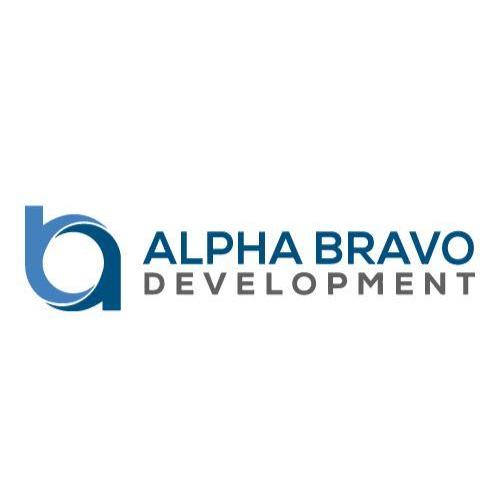Glimpsing the Horizon: The Future of Controlled Release Drug Delivery
The field of Controlled Release Drug Delivery (CRDD) is a dynamic and rapidly evolving area, constantly pushing the boundaries of pharmaceutical science. The future of CRDD is poised to deliver even more personalized, precise, and patient-friendly therapeutic solutions, driven by breakthroughs in materials science, nanotechnology, and artificial intelligence.
https://www.marketresearchfuture.com/reports/controlled-release-drug-delivery-market-6794
Here are some key trends and future directions in CRDD:
"Smart" or Responsive Drug Delivery Systems:
These systems are designed to release drugs not just at a predetermined rate, but in response to specific physiological triggers or external stimuli.
Internal Triggers: Examples include pH changes (e.g., releasing drugs only in the acidic stomach or alkaline intestine), glucose levels (for insulin delivery in diabetes), temperature (for local hyperthermia-triggered release), or presence of specific enzymes (e.g., for targeted cancer therapy).
External Triggers: Light, ultrasound, magnetic fields, or even radiofrequency can be used to activate or modulate drug release, offering precise control by clinicians. This opens up possibilities for on-demand drug delivery.
Impact: This level of intelligence could lead to highly personalized treatments that adapt to a patient's changing physiological state, maximizing efficacy and minimizing side effects.
Nanotechnology in CRDD:
The use of nanoparticles (liposomes, polymeric nanoparticles, micelles, dendrimers) for drug encapsulation and delivery is a burgeoning area.
Targeted Delivery: Nanocarriers can be engineered with specific ligands that bind to receptors on diseased cells (e.g., cancer cells), delivering chemotherapy directly to the tumor while sparing healthy tissues. This is a significant step towards precision medicine.
Improved Bioavailability: Nanoparticles can enhance the solubility and absorption of poorly soluble drugs.
Overcoming Biological Barriers: Nanocarriers can be designed to cross biological barriers that conventional drugs struggle with, such as the blood-brain barrier.
Impact: Nanotechnology promises to unlock new therapeutic avenues for challenging diseases and significantly improve the safety profile of highly potent drugs.
Biologics and Large Molecule Delivery:
With the rise of protein, peptide, and nucleic acid-based drugs (biologics), CRDD is crucial for their effective delivery. These molecules are often sensitive to degradation and have short half-lives, making conventional oral delivery challenging.
CRDD systems like long-acting injectable microspheres, implants, and even innovative oral delivery systems designed to protect biologics are being developed to facilitate their stable and sustained release.
Impact: This will enable more convenient administration of complex biologics, reducing the burden of frequent injections for chronic conditions.
3D Printing for Customized Dosage Forms:
Advances in 3D printing (additive manufacturing) allow for the creation of highly customized drug delivery devices and formulations with complex geometries.
This enables "polypills" containing multiple drugs with different release profiles in a single tablet, or personalized dosages tailored to an individual patient's needs.
Impact: Offers the potential for highly personalized medicine, optimizing therapy for each patient.
Combination Product Development:
The future will see more integrated CRDD systems that combine the drug delivery mechanism with a diagnostic or monitoring component (theranostics).
For example, an implantable device could not only deliver a drug but also monitor physiological parameters and adjust release rates accordingly.
Impact: Enables closed-loop drug delivery systems, providing real-time feedback and truly individualized therapy.
The future of CRDD is dynamic and interdisciplinary, drawing on advancements in materials science, biology, engineering, and digital technologies. These innovations promise to make drug therapy more precise, effective, and patient-centric than ever before, ultimately improving health outcomes globally.
The field of Controlled Release Drug Delivery (CRDD) is a dynamic and rapidly evolving area, constantly pushing the boundaries of pharmaceutical science. The future of CRDD is poised to deliver even more personalized, precise, and patient-friendly therapeutic solutions, driven by breakthroughs in materials science, nanotechnology, and artificial intelligence.
https://www.marketresearchfuture.com/reports/controlled-release-drug-delivery-market-6794
Here are some key trends and future directions in CRDD:
"Smart" or Responsive Drug Delivery Systems:
These systems are designed to release drugs not just at a predetermined rate, but in response to specific physiological triggers or external stimuli.
Internal Triggers: Examples include pH changes (e.g., releasing drugs only in the acidic stomach or alkaline intestine), glucose levels (for insulin delivery in diabetes), temperature (for local hyperthermia-triggered release), or presence of specific enzymes (e.g., for targeted cancer therapy).
External Triggers: Light, ultrasound, magnetic fields, or even radiofrequency can be used to activate or modulate drug release, offering precise control by clinicians. This opens up possibilities for on-demand drug delivery.
Impact: This level of intelligence could lead to highly personalized treatments that adapt to a patient's changing physiological state, maximizing efficacy and minimizing side effects.
Nanotechnology in CRDD:
The use of nanoparticles (liposomes, polymeric nanoparticles, micelles, dendrimers) for drug encapsulation and delivery is a burgeoning area.
Targeted Delivery: Nanocarriers can be engineered with specific ligands that bind to receptors on diseased cells (e.g., cancer cells), delivering chemotherapy directly to the tumor while sparing healthy tissues. This is a significant step towards precision medicine.
Improved Bioavailability: Nanoparticles can enhance the solubility and absorption of poorly soluble drugs.
Overcoming Biological Barriers: Nanocarriers can be designed to cross biological barriers that conventional drugs struggle with, such as the blood-brain barrier.
Impact: Nanotechnology promises to unlock new therapeutic avenues for challenging diseases and significantly improve the safety profile of highly potent drugs.
Biologics and Large Molecule Delivery:
With the rise of protein, peptide, and nucleic acid-based drugs (biologics), CRDD is crucial for their effective delivery. These molecules are often sensitive to degradation and have short half-lives, making conventional oral delivery challenging.
CRDD systems like long-acting injectable microspheres, implants, and even innovative oral delivery systems designed to protect biologics are being developed to facilitate their stable and sustained release.
Impact: This will enable more convenient administration of complex biologics, reducing the burden of frequent injections for chronic conditions.
3D Printing for Customized Dosage Forms:
Advances in 3D printing (additive manufacturing) allow for the creation of highly customized drug delivery devices and formulations with complex geometries.
This enables "polypills" containing multiple drugs with different release profiles in a single tablet, or personalized dosages tailored to an individual patient's needs.
Impact: Offers the potential for highly personalized medicine, optimizing therapy for each patient.
Combination Product Development:
The future will see more integrated CRDD systems that combine the drug delivery mechanism with a diagnostic or monitoring component (theranostics).
For example, an implantable device could not only deliver a drug but also monitor physiological parameters and adjust release rates accordingly.
Impact: Enables closed-loop drug delivery systems, providing real-time feedback and truly individualized therapy.
The future of CRDD is dynamic and interdisciplinary, drawing on advancements in materials science, biology, engineering, and digital technologies. These innovations promise to make drug therapy more precise, effective, and patient-centric than ever before, ultimately improving health outcomes globally.
Glimpsing the Horizon: The Future of Controlled Release Drug Delivery
The field of Controlled Release Drug Delivery (CRDD) is a dynamic and rapidly evolving area, constantly pushing the boundaries of pharmaceutical science. The future of CRDD is poised to deliver even more personalized, precise, and patient-friendly therapeutic solutions, driven by breakthroughs in materials science, nanotechnology, and artificial intelligence.
https://www.marketresearchfuture.com/reports/controlled-release-drug-delivery-market-6794
Here are some key trends and future directions in CRDD:
"Smart" or Responsive Drug Delivery Systems:
These systems are designed to release drugs not just at a predetermined rate, but in response to specific physiological triggers or external stimuli.
Internal Triggers: Examples include pH changes (e.g., releasing drugs only in the acidic stomach or alkaline intestine), glucose levels (for insulin delivery in diabetes), temperature (for local hyperthermia-triggered release), or presence of specific enzymes (e.g., for targeted cancer therapy).
External Triggers: Light, ultrasound, magnetic fields, or even radiofrequency can be used to activate or modulate drug release, offering precise control by clinicians. This opens up possibilities for on-demand drug delivery.
Impact: This level of intelligence could lead to highly personalized treatments that adapt to a patient's changing physiological state, maximizing efficacy and minimizing side effects.
Nanotechnology in CRDD:
The use of nanoparticles (liposomes, polymeric nanoparticles, micelles, dendrimers) for drug encapsulation and delivery is a burgeoning area.
Targeted Delivery: Nanocarriers can be engineered with specific ligands that bind to receptors on diseased cells (e.g., cancer cells), delivering chemotherapy directly to the tumor while sparing healthy tissues. This is a significant step towards precision medicine.
Improved Bioavailability: Nanoparticles can enhance the solubility and absorption of poorly soluble drugs.
Overcoming Biological Barriers: Nanocarriers can be designed to cross biological barriers that conventional drugs struggle with, such as the blood-brain barrier.
Impact: Nanotechnology promises to unlock new therapeutic avenues for challenging diseases and significantly improve the safety profile of highly potent drugs.
Biologics and Large Molecule Delivery:
With the rise of protein, peptide, and nucleic acid-based drugs (biologics), CRDD is crucial for their effective delivery. These molecules are often sensitive to degradation and have short half-lives, making conventional oral delivery challenging.
CRDD systems like long-acting injectable microspheres, implants, and even innovative oral delivery systems designed to protect biologics are being developed to facilitate their stable and sustained release.
Impact: This will enable more convenient administration of complex biologics, reducing the burden of frequent injections for chronic conditions.
3D Printing for Customized Dosage Forms:
Advances in 3D printing (additive manufacturing) allow for the creation of highly customized drug delivery devices and formulations with complex geometries.
This enables "polypills" containing multiple drugs with different release profiles in a single tablet, or personalized dosages tailored to an individual patient's needs.
Impact: Offers the potential for highly personalized medicine, optimizing therapy for each patient.
Combination Product Development:
The future will see more integrated CRDD systems that combine the drug delivery mechanism with a diagnostic or monitoring component (theranostics).
For example, an implantable device could not only deliver a drug but also monitor physiological parameters and adjust release rates accordingly.
Impact: Enables closed-loop drug delivery systems, providing real-time feedback and truly individualized therapy.
The future of CRDD is dynamic and interdisciplinary, drawing on advancements in materials science, biology, engineering, and digital technologies. These innovations promise to make drug therapy more precise, effective, and patient-centric than ever before, ultimately improving health outcomes globally.
0 Comments
0 Shares





